Drinking Water Problem in Nepal
Nepal is situated between the Himalayan mountains and touches the border with India. Nepal has a historic culture and many tourist spots cause a lot of hotels and malls are available in Nepal.
Nepal has a diverse climate due to its topography the climate of Nepal can be divided into three parts low lands, mid lands, and mountains.
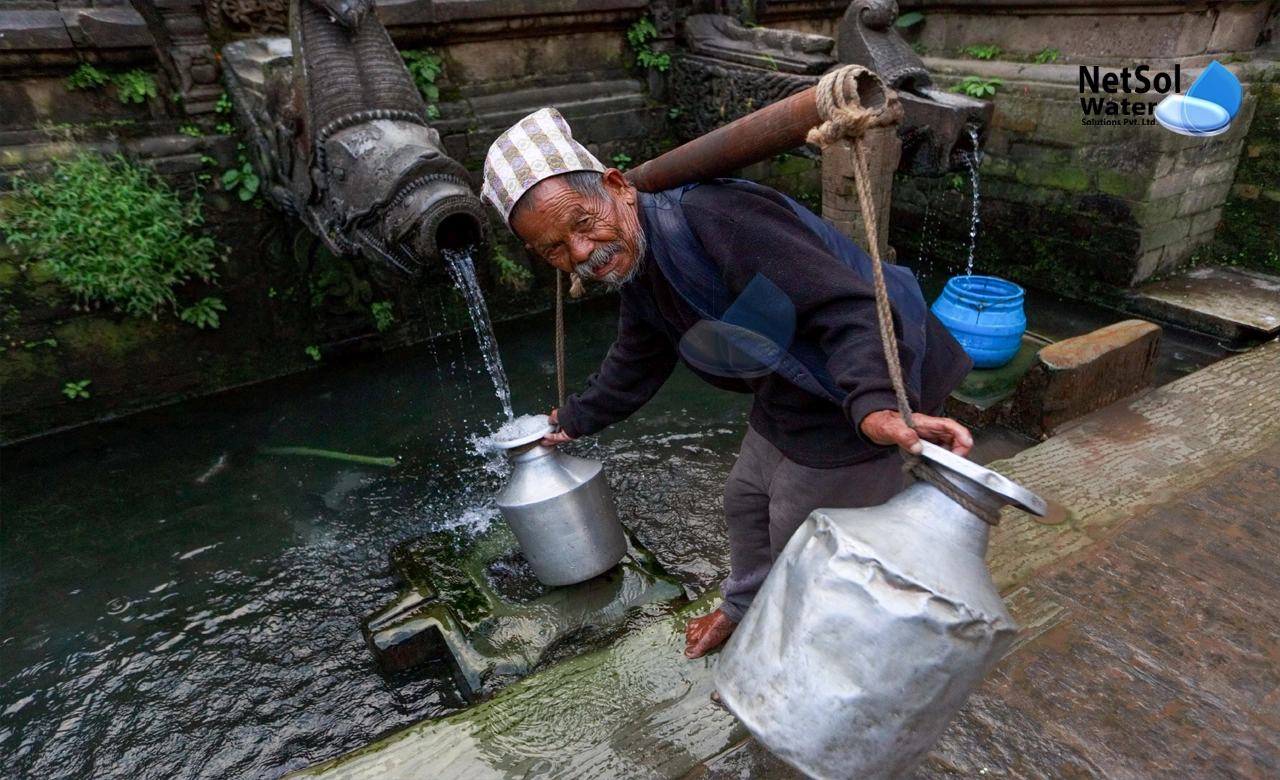
What percentage of Nepal is safe drinking water?
81% of people who live in rural areas of Nepal have access to basic drinking water, and only 13% have access to safely managed drinking water. Even in the richest households, only 26% have access to safely managed drinking water.

Drinking Water Quality in Nepal:
Nepal faces essential challenges related to drinking water quality, with various factors impacting the accessibility and safety of this essential resource. The quality of drinking water in Nepal is influenced by a combination of geographical, environmental, and infrastructural factors, posing challenges to the well-being of its population.

Geographical Diversity:
Nepal has a diverse geography, characterized by mountains and remote terrain, which contributes to difficulties in establishing an effective water supply infrastructure. Access to clean water is particularly challenging in rural and hard-to-reach areas.
Contamination Risks:
Contamination of water sources is a common issue. Agricultural runoff, inadequate sanitation facilities, and industrial discharges can introduce pollutants into both surface and groundwater, leading to waterborne diseases.
Population Pressure:
The increasing population exerts pressure on existing water sources. High demand, especially in urban areas, strains the available infrastructure, making it difficult to meet the growing need for safe drinking water.
Infrastructure Limitations:
Inadequate water supply infrastructure, especially in rural regions, hampers efforts to provide clean drinking water. Limited investment in water treatment facilities and distribution systems exacerbates the problem.
Climate Variability:
Seasonal variations in precipitation and climate conditions impact water availability. Inconsistent rainfall patterns can lead to water scarcity, affecting the overall quality and accessibility of drinking water.
What are the Solutions to Improve the Water Quality?
Water Quality Monitoring:
Implementing strong water quality monitoring systems is important. Regular testing helps identify contamination sources and ensures that drinking water meets safety standards.
Infrastructure Development:
Investing in water supply infrastructure, especially in rural and remote areas, is essential. Constructing wells, boreholes, and pipelines can improve access to clean water.
Community Awareness:
Educating communities about proper sanitation, hygiene practices, and the importance of clean water is important. Awareness campaigns empower individuals to contribute to their water quality.
Technological Solutions:
Implementing water treatment technologies, such as filtration and disinfection methods, can significantly improve water quality. Commercial RO (Reverse Osmosis) plants and other advanced systems may be considered for larger-scale applications.
Collaboration and International Aid:
Collaborating with governmental bodies, non-governmental organizations (NGOs), and international partners can bring in expertise and financial support to address water quality issues effectively.
Legislation and Regulation:
Strengthening and enforcing water quality regulations ensures that standards are met across the country. Monitoring and enforcing compliance play a vital role in safeguarding drinking water quality.
Solving Water Issues by Using Commercial RO Plant:
Commercial Reverse Osmosis (RO) Plants rising as a compelling technology, offering a robust means to remove water issues in various sectors. From industrial applications to community water supply, employing Commercial RO Plants presents a versatile approach to enhancing water quality and availability.
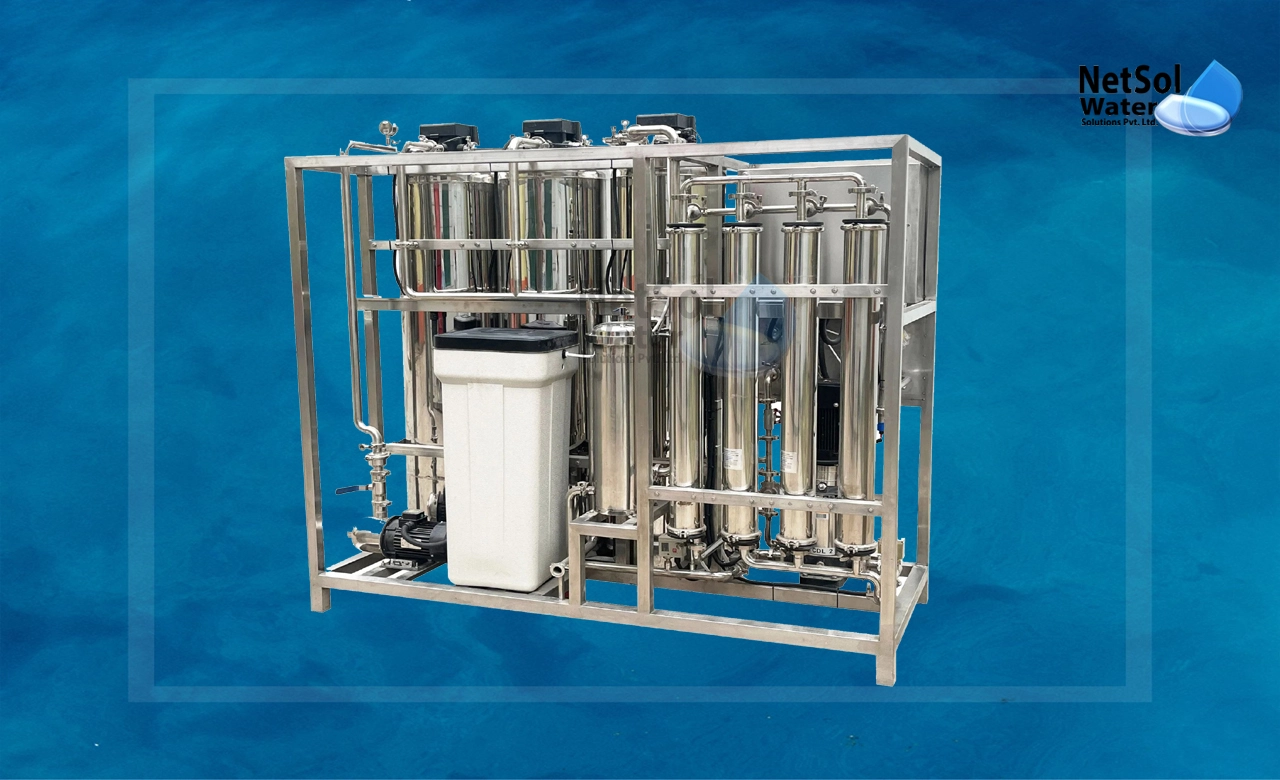
Purification Excellence:
Commercial RO Plants are famous for their exceptional water purification capabilities. Utilizing the principle of reverse osmosis, these systems effectively remove impurities, contaminants, and dissolved solids from water, ensuring a high degree of purity.
Versatility Across Sectors:
One of the key advantages of Commercial RO Plants stands in their adaptability. They can be seamlessly integrated into diverse sectors, including industrial processes, municipal water treatment, and commercial establishments. This adaptability makes them a valuable asset in addressing water challenges across various domains.
Contaminant Removal:
The reverse osmosis process employed by these plants is particularly adept at removing a spectrum of contaminants. Whether it's minerals, heavy metals, or organic pollutants, Commercial RO Plants excel in providing clean and safe water by effectively filtering out these impurities.
Scalability and Capacity:
Commercial RO Plants come in a range of capacities, allowing for scalability based on specific water demands. This flexibility makes them suitable for both small-scale applications, such as restaurants or offices, and large-scale industrial processes requiring significant water volumes.
Cost-Effective Solution:
While the initial setup costs may vary, Commercial RO Plants are considered cost-effective in the long run. The efficiency in purifying water, reducing dependence on bottled water, and the longevity of the systems contribute to overall cost savings over time.
Environmental Sustainability:
By offering an alternative to single-use plastic bottles, Commercial RO Plants contribute to environmental sustainability. They reduce the carbon footprint associated with the production, transportation, and disposal of bottled water, aligning with eco-friendly practices.
Compliance with Standards:
Commercial RO systems adhere to stringent water quality standards. This ensures that the treated water meets regulatory requirements for drinking water, industrial processes, and other applications, instilling confidence in its effectiveness and safety.
Advanced Monitoring and Control:
Modern Commercial RO systems often come equipped with advanced monitoring and control systems. These features enable real-time tracking of water quality parameters, and system performance, and allow for proactive maintenance, ensuring continuous and reliable operation.
Community Water Supply:
In regions facing water scarcity or lacking centralized water infrastructure, deploying Commercial RO Plants for community water supply can be transformative. These systems provide a decentralized solution, offering clean water directly to the communities that need it.
Research and Innovation:
Ongoing research and technological advancements in the field of reverse osmosis contribute to the continuous improvement of Commercial RO Plants. Innovations aim to enhance energy efficiency, reduce waste, and further optimize the overall performance of these water treatment systems.
What is the Commercial RO plant?
A Commercial Reverse Osmosis (RO) plant is a sophisticated water treatment system that is designed for large-scale applications in commercial, industrial, and community settings. This technology is truly based on the principle of reverse osmosis. The process involves the removal of impurities and contaminants from water by pushing it through a semi-permeable membrane.

Components of a Commercial RO Plant:
Reverse Osmosis Process:
1- The main function of the system is the reverse osmosis process, where water is forced through a semi-permeable membrane to separate impurities, dissolved solids, and contaminants from the water molecules.
2- The semi-permeable membrane allows only water molecules to pass through, blocking larger particles, ions, and pollutants.
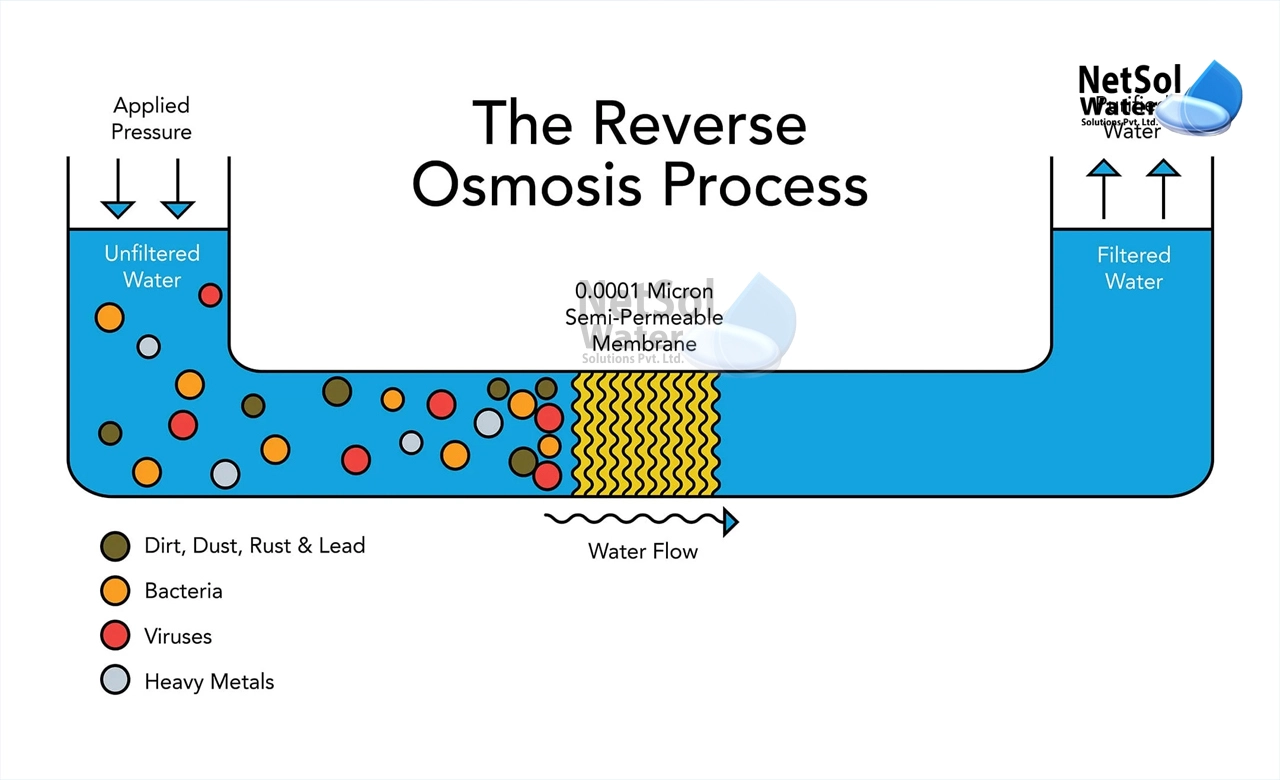
Pre-Treatment Stage:
In the pre-treatment stage, water undergoes pre-treatment to remove larger impurities, sediments, and substances that may damage the RO membrane.
Common pre-treatment methods include sediment filtration, carbon filtration, and sometimes water softening.
High-Pressure Pump:
A high-pressure pump is employed to push water through the RO membrane with sufficient force. This pressure is essential for overcoming the osmotic pressure and facilitating the separation of impurities

RO Membrane:
The RO membrane is a critical component that selectively allows water molecules to pass while blocking contaminants. This membrane is responsible for achieving a high level of purification.
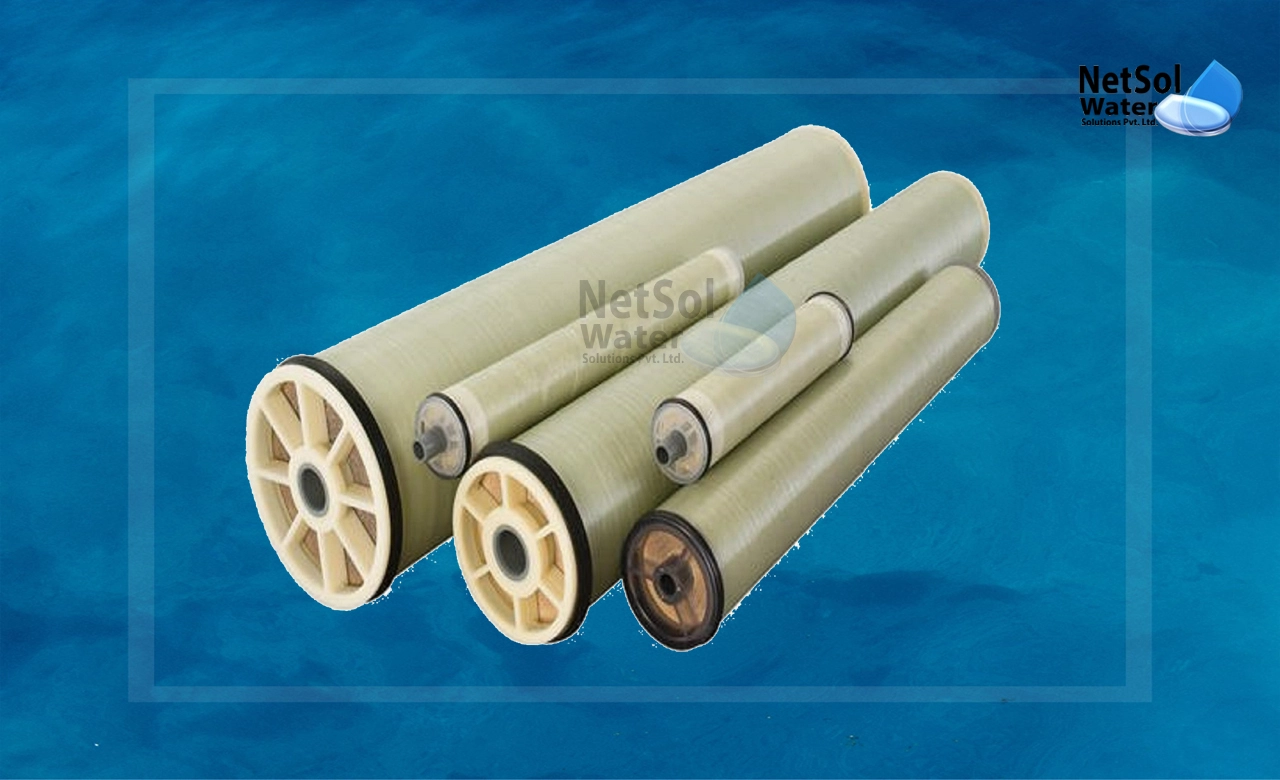
Post-Treatment and Disinfection:
When the water passes through the RO membrane, it undergoes post-treatment to further enhance its quality. This may involve additional filtration, disinfection, or the addition of minerals for taste and health considerations.
Storage Tank:
The treated water is often stored in a dedicated tank to ensure a continuous and reliable water supply. This storage facilitates the distribution of purified water as needed.

Monitoring and Control Systems:
Modern Commercial RO Plants are equipped with advanced monitoring and control systems. These systems allow operators to monitor water quality parameters, and system performance, and conduct maintenance as necessary.
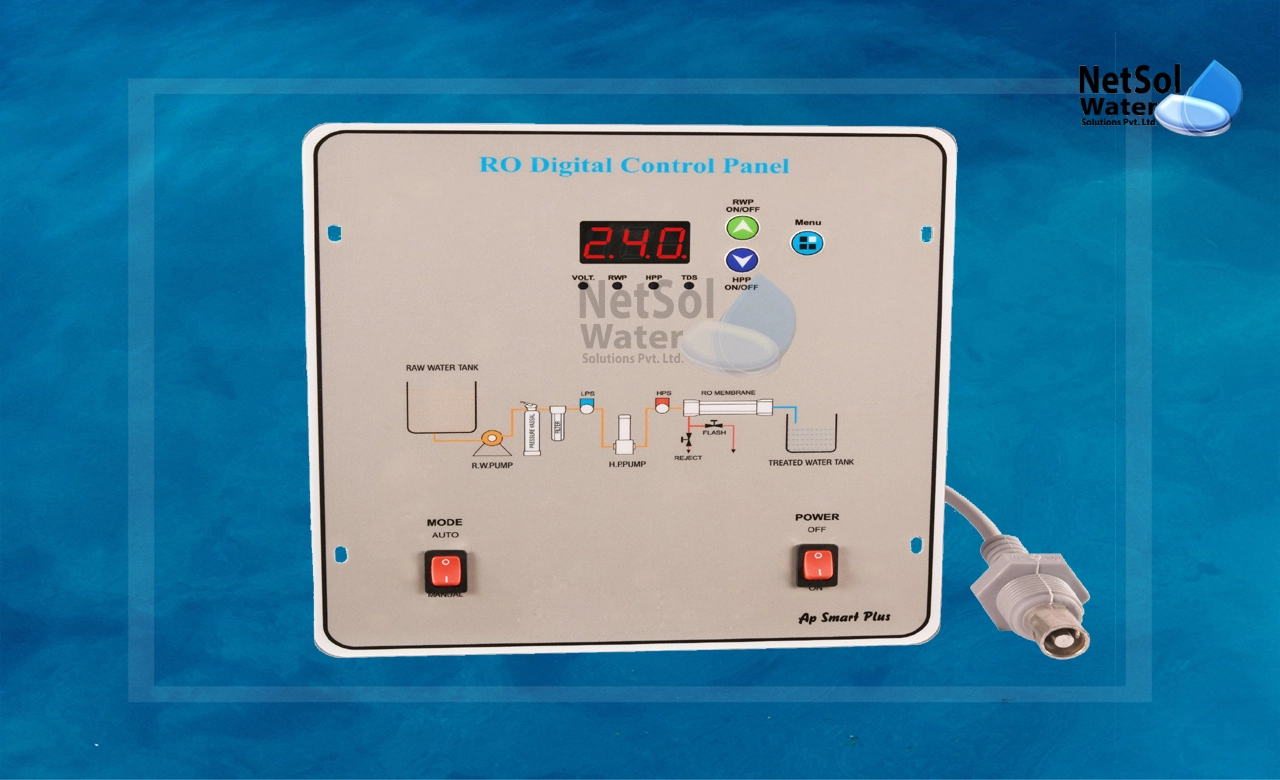
Scalability:
Commercial RO Plants are designed to be scalable, accommodating varying water demands in commercial establishments, industrial processes, or community water supply. They are available in a range of capacities to suit different applications.
Application Areas:
Commercial RO Plants find application in diverse sectors such as manufacturing, food and beverage production, pharmaceuticals, hospitality, and community water supply. They provide a reliable and efficient means of ensuring a clean and safe water source for these applications.
Top 3 Commercial RO Plant Manufacturers in Nepal
Ensuring access to clean and safe drinking water is an urgent need in Nepal, and the role of commercial Reverse Osmosis (RO) plant manufacturers is paramount in addressing this challenge. Let’s learn about the top three commercial RO plant manufacturers in Nepal, recognized for their quality products, innovative solutions, and commitment to water purification.
Netsol Water:
Netsol Water is the leading commercial RO plant manufacturer in Nepal. Netsol implemented many more Commercial RO plants in Nepal, Netsol worked with multiple kinds of industries from jubilant to BHEL. Also installed RO plants for hospitals like Max, and Kailash. Working with these companies proves the quality and reliability of Netsol Water.
Commercial RO Plant:
Commercial RO plant is also a top player in the field of manufacturing Commercial RO plants with its customized services.
AquaFresh:
Aquafresh India RO System deals in UV water purification technology and has developed the Aqua Fresh RO system to meet the demanding CE AND 1SO 9001: 2015 with the following features: Aqua Fresh RO UV technology destroys microbes, bacteria and viruses.



